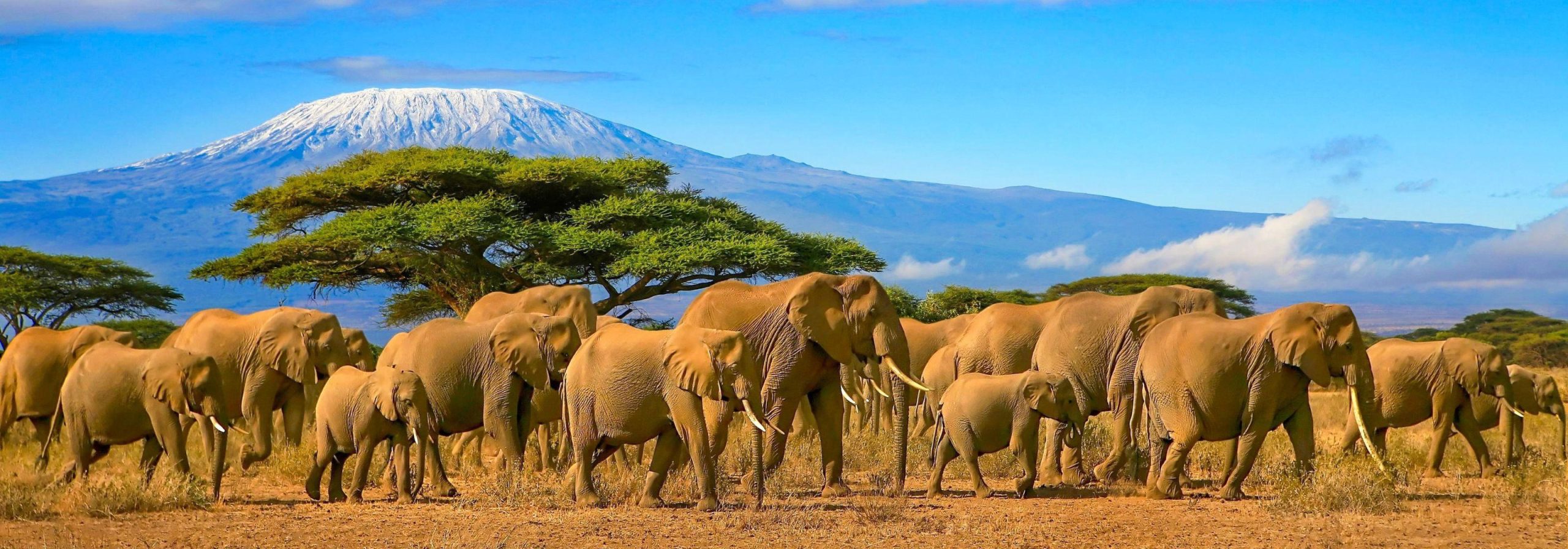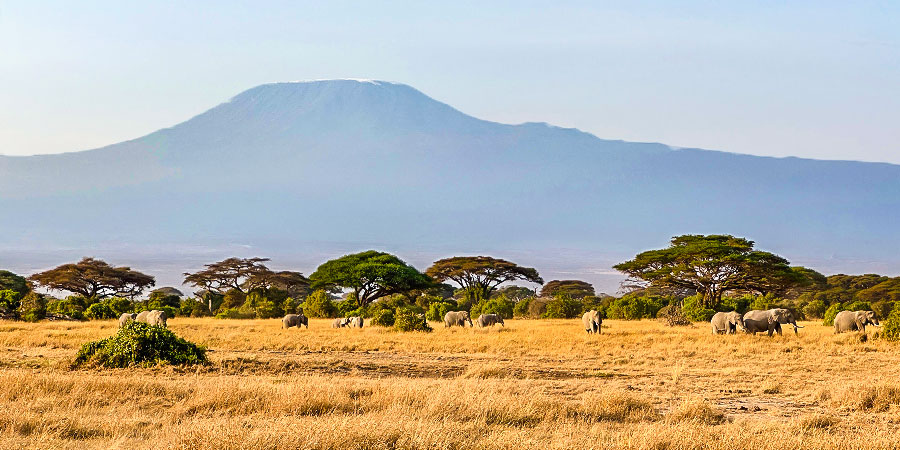
Tanzania is not just a destination; it is an epic narrative written across vast savannahs, towering volcanic peaks, and spice-scented islands. It’s a place where the echoes of humanity’s origins can be felt in the dust of the Olduvai Gorge and where the rhythm of life is dictated by the ancient spectacle of the Great Migration. From the snow-capped summit of Mount Kilimanjaro to the turquoise waters lapping the shores of Zanzibar, Tanzania offers a journey that stirs the soul and awakens a profound sense of wonder. This guide will navigate you through this East African jewel, covering its rich history, iconic attractions, and the practicalities of planning an unforgettable adventure.
A Glimpse into Tanzania’s Rich History
To truly appreciate Tanzania, one must understand its deep and layered past. This is, after all, the "Cradle of Mankind." The Olduvai Gorge in the north has yielded hominid fossils dating back millions of years, cementing the region’s status as the birthplace of our earliest ancestors.
Related Articles about Tanzania: A Symphony of Wilderness, Culture, and Coastline:
- Norway: Where Fjords Kiss the Sky and History Echoes in the Mountains
- Unveiling the Majesty: A Guide to the Best Tourist Attractions in the United Kingdom
- Poland: A Journey Through History, Culture, and Unforgettable Landscapes
- Unveiling the Majesty of Peru: A Journey Through History, Culture, and Adventure
- Japan: A Journey Through Tradition, Innovation, and Unforgettable Experiences
Centuries later, the coastal regions flourished as part of the Swahili Coast civilization. From the 8th century onwards, Arab, Persian, and Indian traders sailed on the monsoon winds, establishing bustling city-states like Kilwa and Zanzibar. They brought Islam, architecture, and commerce, trading in gold, ivory, and tragically, enslaved people, in exchange for spices, silks, and porcelain. This fusion of cultures created the unique Swahili language and identity that still defines the coast today.
The 19th century brought European colonial powers. Mainland Tanganyika became a German colony, known as German East Africa, until after World War I, when it was mandated to the British. Zanzibar remained a separate sultanate under British protection. The winds of change blew across the continent in the mid-20th century, and Tanganyika, led by the visionary Julius Nyerere, gained peaceful independence in 1961. In a landmark move in 1964, it united with the newly independent Zanzibar to form the United Republic of Tanzania, a name artfully blending the two territories. This rich tapestry of ancient history, Swahili trade, colonial rule, and unified independence informs the vibrant and diverse culture you’ll find today.
Main Attractions: The Heart of the Adventure
Tanzania’s attractions are legendary, offering a diverse portfolio of experiences that cater to every type of traveler.
The Unmissable Northern Circuit
This is the classic safari route, home to some of the most famous wildlife reserves on the planet.
-
Serengeti National Park: The name itself, derived from the Maasai for "endless plains," is a perfect description. This UNESCO World Heritage site is a sweeping 15,000-square-kilometer expanse of grassland, acacia-dotted savannah, and riverine forests. It is the stage for the Great Migration, one of nature’s most awe-inspiring spectacles. Over 1.5 million wildebeest, accompanied by zebras and gazelles, thunder across the plains in a relentless cycle of birth and survival, braving crocodile-infested rivers and predator-filled grasslands. Beyond the migration, the Serengeti offers phenomenal year-round game viewing, with abundant lion prides, cheetahs, leopards, elephants, and a host of other species.
-
Ngorongoro Crater: Often called "Africa’s Eden," the Ngorongoro Conservation Area is another UNESCO site, featuring the world’s largest intact volcanic caldera. After descending 600 meters to the crater floor, you enter a self-contained ecosystem teeming with an incredible density of wildlife. This is one of the best places in Africa to spot the Big Five (lion, leopard, elephant, buffalo, and the critically endangered black rhino) in a single day. The backdrop of the crater walls creates a dramatic and almost surreal safari experience.
-
Mount Kilimanjaro: Africa’s highest peak and the world’s tallest free-standing mountain, Kilimanjaro rises majestically from the plains to a height of 5,895 meters (19,341 feet). Climbing "Kili" is a non-technical trek, a test of endurance and altitude acclimatization rather than mountaineering skill. Trekkers pass through five distinct climate zones, from lush rainforest at the base, through heath and moorland, to an alpine desert, and finally, the arctic-like summit zone of ice and snow. Reaching Uhuru Peak at sunrise is a life-affirming achievement.
-
Tarangire National Park: Known as the "Land of Giants," Tarangire is defined by its colossal baobab trees and massive herds of elephants. During the dry season (June to October), the Tarangire River becomes a vital water source, attracting a huge concentration of animals from the surrounding areas. It’s a less crowded but equally rewarding alternative to the Serengeti, offering fantastic birdwatching and a wild, untamed atmosphere.
The Spice-Scented Archipelago: Zanzibar
A short flight from the mainland, Zanzibar feels like a world away. It’s an archipelago steeped in history and blessed with breathtaking beaches.
-
Stone Town: The historical heart of Zanzibar City is a labyrinth of narrow, winding alleys, bustling bazaars, and magnificent carved wooden doors. This UNESCO World Heritage site is a melting pot of African, Arab, Indian, and European influences. Lose yourself in its streets, visit the former slave market, see the house where Freddie Mercury was born, and soak in the atmosphere at Forodhani Gardens as it transforms into a vibrant night market.
-
Pristine Beaches: Zanzibar’s coastline is the stuff of dreams. In the north, Nungwi and Kendwa offer idyllic white sands and calm, turquoise waters perfect for swimming and snorkeling, with spectacular sunsets. The east coast, with beaches like Paje and Jambiani, is a kitesurfing paradise, characterized by its dramatic tidal changes that reveal vast sandbanks and seaweed farms at low tide.
-
Spice Farms: No trip to the "Spice Island" is complete without a tour of a local spice farm. This sensory journey allows you to see, smell, and taste spices like cloves, vanilla, cinnamon, nutmeg, and cardamom growing in their natural environment.
Best Time to Visit
Tanzania is a year-round destination, but the best time to visit depends on your interests.
- Dry Season (June to October): This is the peak season and generally considered the best time for wildlife viewing. The vegetation is sparse, and animals congregate around rivers and waterholes, making them easier to spot. The weather is pleasant with clear skies, ideal for climbing Kilimanjaro.
- Green Season (November to May): This period sees two rainy seasons: the "short rains" (November-December) and the "long rains" (March-May). The landscape is lush and green, and it’s the best time for birdwatching. Visitor numbers are lower, and you can often find better prices on lodges and tours. The calving season for the Great Migration occurs in the southern Serengeti from January to February, a dramatic time to witness new life and predator action.
Essential Travel Tips
- Visa: Most nationalities require a visa. It’s highly recommended to apply for an e-Visa online in advance to save time upon arrival.
- Health: Consult your doctor well before your trip about necessary vaccinations (Yellow Fever may be required) and malaria prophylaxis. Pack insect repellent, sunscreen, and a basic first-aid kit.
- Currency: The official currency is the Tanzanian Shilling (TZS). However, US Dollars are widely accepted, especially for tourism-related expenses like park fees, hotels, and safaris. It’s best to carry newer USD bills (post-2009).
- Packing: Pack lightweight clothing in neutral safari colors (avoid black, blue, and bright colors). Include long sleeves and trousers for evening protection against mosquitoes. A warm fleece or jacket is essential for cool mornings and evenings on safari and at higher altitudes. Don’t forget a sun hat, sunglasses, and a good camera with extra batteries.
- Etiquette: Tanzanians are warm and welcoming. Learning a few Swahili phrases like "Jambo" (Hello), "Asante" (Thank you), and "Karibu" (Welcome) will be greatly appreciated. When in Zanzibar and coastal areas with a large Muslim population, dress modestly out of respect for local culture.
Transportation Options
- International Flights: Major international airports are Julius Nyerere International Airport (DAR) in Dar es Salaam, Kilimanjaro International Airport (JRO) near Arusha, and Abeid Amani Karume International Airport (ZNZ) in Zanzibar.
- Internal Flights: For covering the vast distances between safari circuits and the coast, domestic flights are the most efficient option. Small bush planes operated by airlines like Coastal Aviation and Precision Air are a common and thrilling way to travel between national parks.
- Safari Vehicles: On safari, you’ll travel in a custom-built 4×4 Land Cruiser or Land Rover with a pop-up roof for optimal game viewing. These are driven by experienced local driver-guides who are experts in tracking wildlife.
- Ground Transport: For travel between cities, there are buses and coaches, though they can be crowded. Within cities like Arusha and Dar es Salaam, taxis and ride-sharing services are available.
Accommodation: From Tents to Palaces
Tanzania offers a wide range of accommodation to suit every budget and style.
- Luxury Lodges and Tented Camps: For a truly immersive experience, stay at a luxury lodge or a permanent tented camp inside or on the edge of a national park. These offer gourmet food, exceptional service, and the thrill of hearing wildlife just outside your canvas walls.
- Mid-Range Lodges: These provide comfortable and clean accommodation, often with amenities like swimming pools and restaurants, and are a popular choice for most safari-goers.
- Budget Guesthouses: In towns and cities, you can find a variety of budget-friendly guesthouses and hostels.
- Zanzibar Boutique Hotels: Stone Town is famous for its charming boutique hotels set in restored historic buildings, while the beaches are lined with everything from all-inclusive luxury resorts to rustic beach bungalows.
A Taste of Tanzania: Local Cuisine
Tanzanian food is hearty, flavorful, and diverse, with influences from its African, Indian, and Arab heritage.
- Ugali: The national dish, a stiff maize porridge that is a staple in every household, often served with a stew of meat, fish, or beans.
- Nyama Choma: A social event as much as a meal, this is slow-barbecued meat, usually goat, served with side salads.
- Mishkaki: Marinated and grilled meat skewers, a popular street food.
- Zanzibar Cuisine: On the islands, the food is rich with spices and coconut milk. Don’t miss the seafood curries, Zanzibar pizza (a savory-filled pancake), and fresh tropical fruits.
- Chipsi Mayai: A uniquely Tanzanian street food, this is a simple but delicious French fry omelet.
Conclusion
Tanzania is a country of superlatives—the highest mountain, the most famous wildlife migration, the most beautiful beaches. But beyond the headlines, it is a nation of immense warmth, profound history, and breathtaking natural beauty. It is a place that challenges your perspective, fills your camera’s memory card, and leaves an indelible mark on your heart. Whether you are watching a lioness stalk her prey across the Serengeti, standing triumphantly at the summit of Kilimanjaro, or sailing on a traditional dhow off the coast of Zanzibar, Tanzania delivers a journey that is, in every sense of the word, unforgettable.








